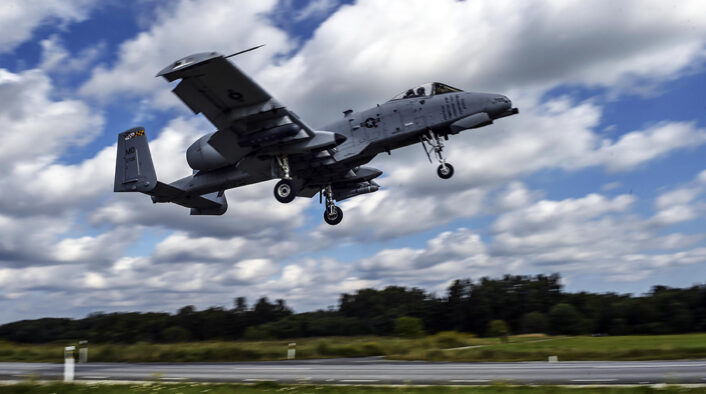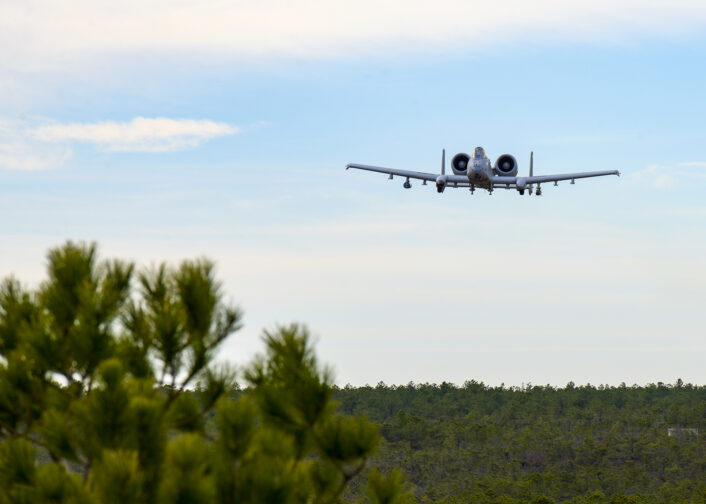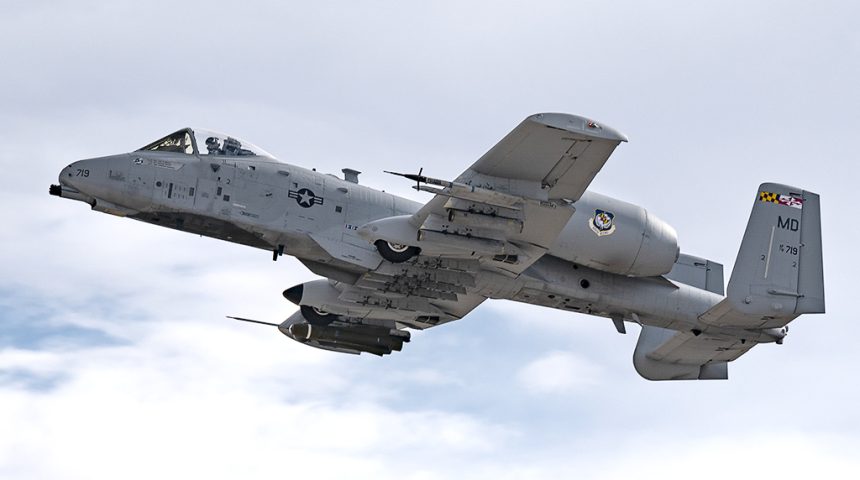Maryland ANG A-10s are going to take part in Exercise Swift Response and deploy to forward operating locations in Eastern Europe and the Baltic region.
Ten A-10C Thunderbolt II attack aircraft belonging to the Maryland Air National Guard and assigned to the 104th Fighter Squadron landed in Iceland, on May 5, 2022, the U.S. Air Force in Europe and Air Forces Europe said in public release.
The “Warthogs” were deployed to Europe to carry out Agile Combat Employment training and support the U.S. Army’s Swift Response exercise, an annual U.S. Army Europe and Africa-led multinational training exercise, taking place from May 2 to 20, 2022, throughout Eastern Europe, including the Arctic, Baltic Sea, and Balkan Peninsula regions. Approximately 9,000 service members from 17 Allied and partner nations will take part in the exercise, including approximately 2,700 U.S. Soldiers and Airmen.
According to the U.S. Air Force, four aircraft transited from Iceland to Norway, on May 6, while the remaining six are scheduled to deploy to North Macedonia on May 7 to support exercise operations.
However, during their stay in the Old Continent, they are not only flying from Norway and North Macedonia: “the A-10 aircraft are scheduled to deploy to forward operating locations in North Macedonia, Latvia, Lithuania, Estonia and Poland to execute their Agile Combat Employment capabilities.”
“The A-10 is the U.S. Air Forces primary low-altitude close air support aircraft and is the first Air Force aircraft designed specifically for close air support to ground forces. These capabilities provide essential support to the joint force land component and afford the U.S. military flexibility in projecting power in highly contested regions.”
The 104th FS A-10s regularly deploy to the Baltic region and in particular, Estonia. The Baltic state joined NATO in 2004 to continue international security cooperation and safeguard its borders. However, Estonia’s military partnership with the Maryland National Guard dates to 1993 through the National Guard Bureau’s State Partnership Program. Since 2013, Maryland’s A-10 crews travel every couple of years to participate in national exercises or U.S. European Command theater-wide exercises with state partners. The Estonian Air Force does not have an aircraft designed for close air support, so it relies on its partners to conduct live control training with their JTACs.

Interestingly, when deployed to Estonia, the Warthogs also take part in unimproved surface/highway operations. During one such events, one of 10 A-10C of the squadron hit and damaged a road sign while performing landing and take off training on Jägala-Käravete Highway in Jägala, a rural highway in northern Estonia.
The current deployment is interesting for many reasons. Needless to say, the presence of the “tank busters” in Eastern Europe and in the Baltic region sends a clear message to Russia, whose attempted blitzkrieg to storm Ukraine and seize the capital to topple the local government has already turned into a painful war of attrition: a symbolic show of force, aimed at deterring any other movement of Russian forces in the direction of the NATO border, rather than an actual capability moved closer to the theatre.
Without mentioning the fact that the involvement of U.S. or NATO forces in the conflict is currently not even being considered, as we explained at the beginning of the Russian invasion, when many advocated the deployment of a few A-10s to Ukraine to wreck havoc of the Russian vehicle column lined up for “40 miles” along the highways north of the Hostomel Airport outside of Kyiv, the Thunderbolt II may not have an easy time fighting the war we are seeing now in Ukraine: they may probably wipe out Russian tanks in open country, but they would need a lot of air support and would still be vulnerable to many air defense systems, including MANPADS. In fact, despite the recent upgrades have improved the Warthog’s targeting and communications capabilities, the A-10 was conceived for different, more permissive scenarios.
Anyway, the A-10s join a significant contingent of NATO aircraft forward deployed to Eastern Europe, an ORBAT that has been augmented recently with the deployment of eight F-35A stealth aircraft, belonging to the 158th Fighter Wing of the U.S. Air Force, that have landed at Spangdahlem Air Base, Germany, to support Enhanced Air Policing mission on NATO’s Eastern Flank.










